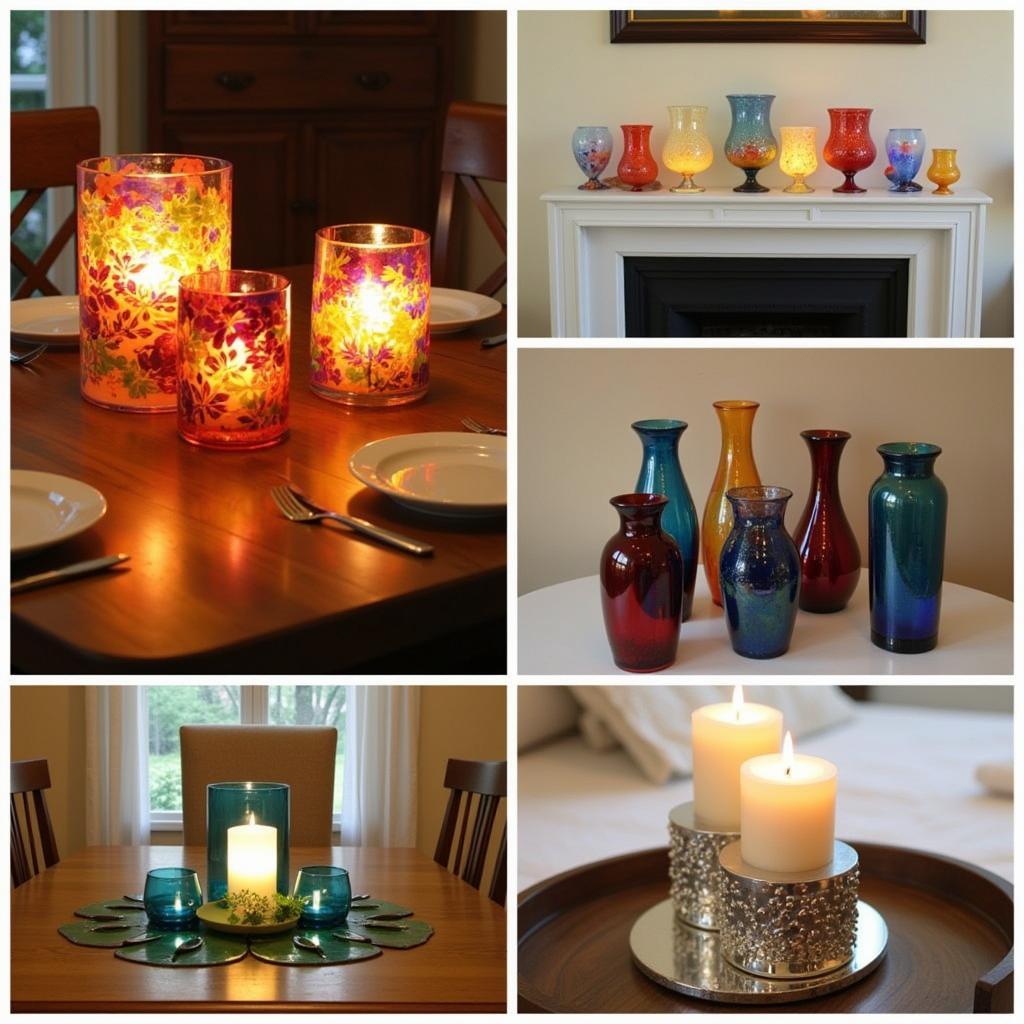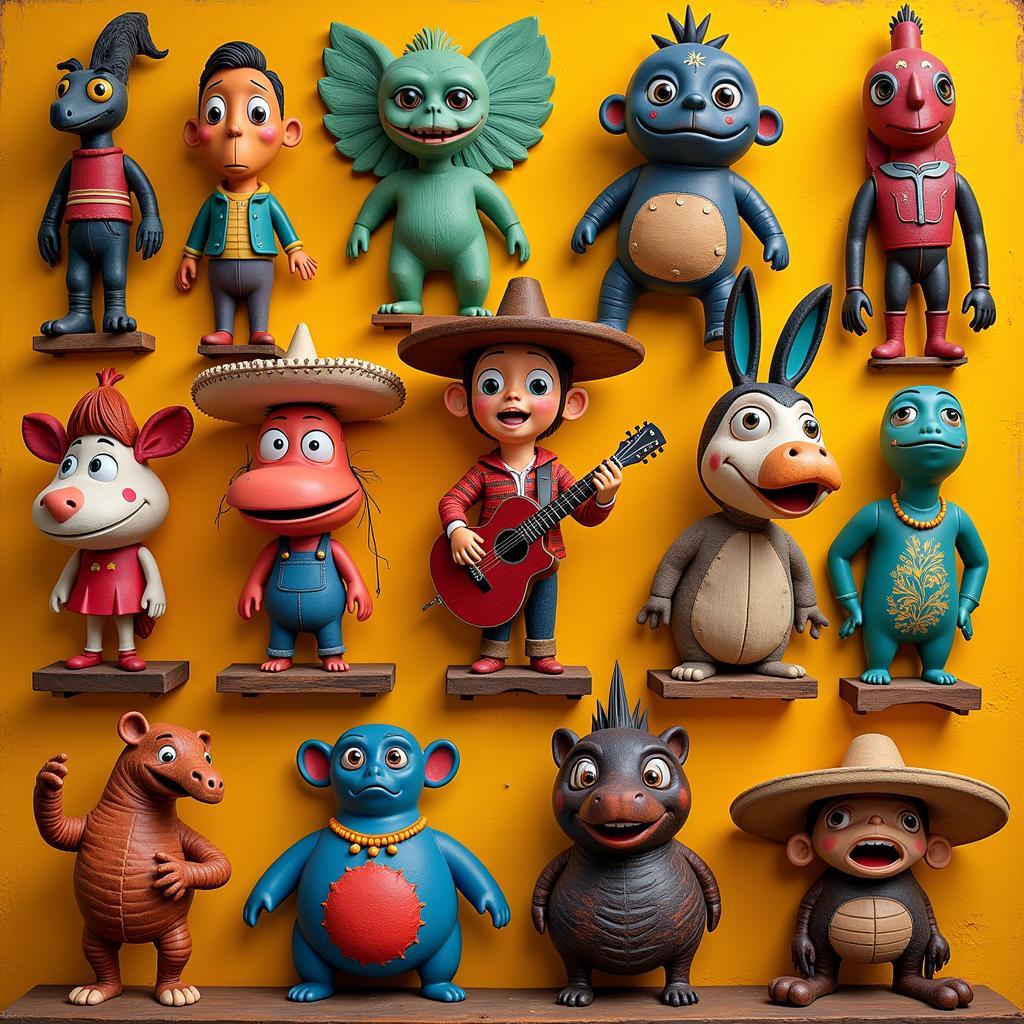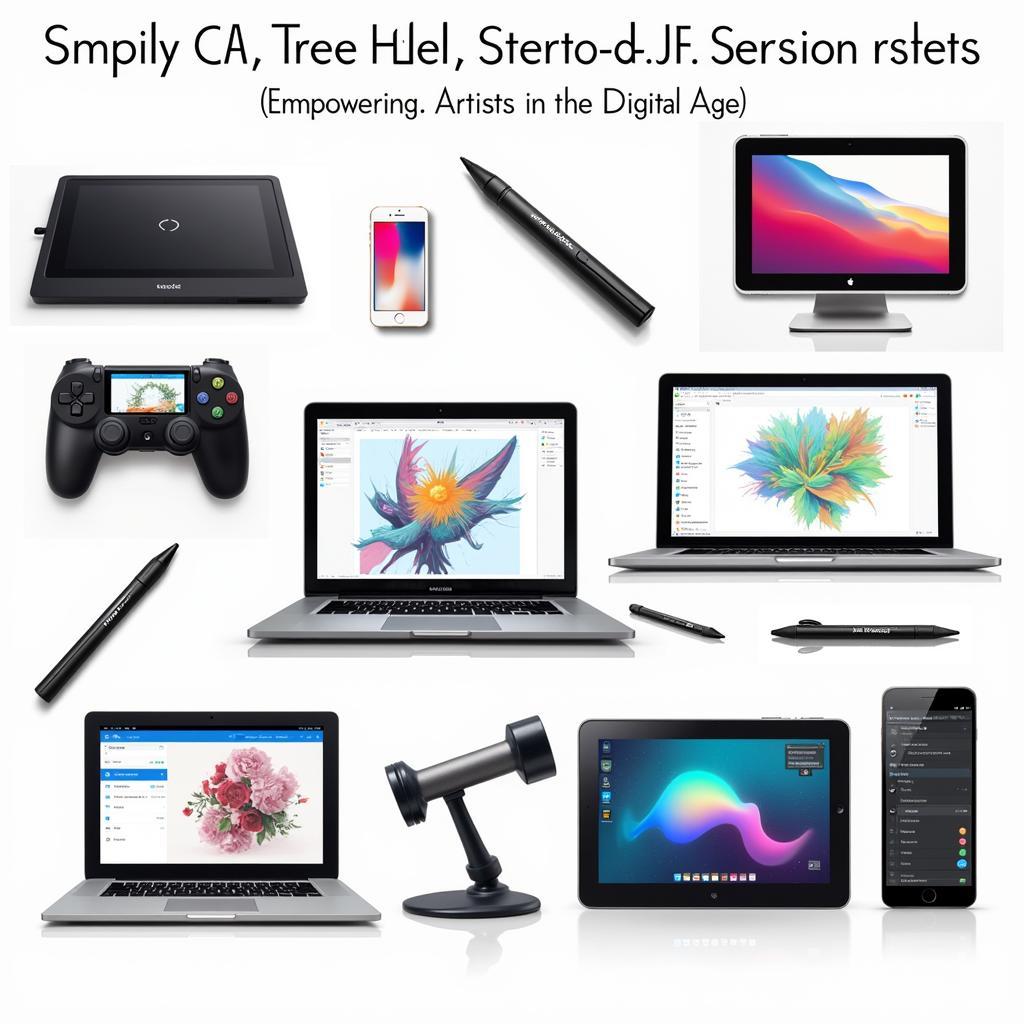Decoding Snob Art: Beyond the Hype and into the Heart of Creation
Snob Art is a term often thrown around in creative circles, sometimes with a sneer, other times with an air of reverence. But what does it truly mean? It’s more than just expensive paintings hanging in sterile galleries. It’s a complex interplay of perception, value, and the very essence of artistic expression. This exploration delves into the multifaceted world of snob art, dissecting its meaning, exploring its impact on the art world, and ultimately, helping you navigate its intricate landscape.
Unmasking the Snob Art Phenomenon
The term “snob art” can evoke a range of reactions, from fascination to disdain. It often refers to art perceived as exclusive, highbrow, and appreciated by a select few. This exclusivity can stem from various factors, including the artist’s reputation, the artwork’s historical significance, its price tag, or even the specific theories and concepts it embodies. However, “snob art” doesn’t necessarily equate to “good art”. Sometimes, the perceived value is inflated by hype and market manipulation, creating a bubble of artificial significance.
Understanding snob art requires examining the context in which it exists. Is it truly groundbreaking and innovative, or is its value derived from its association with a particular movement or social circle? Are we appreciating the art itself, or the prestige associated with owning or understanding it?
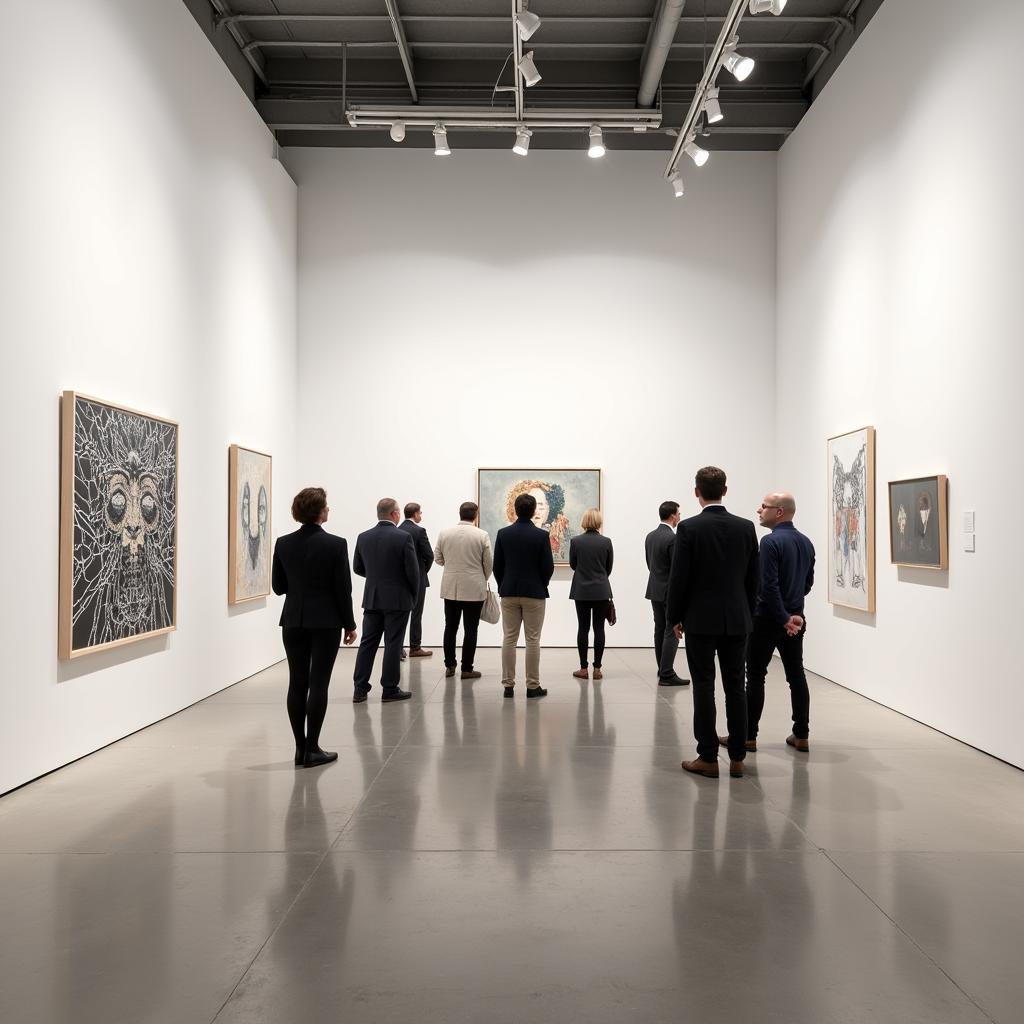 Snob Art Gallery Exhibition
Snob Art Gallery Exhibition
Is it Elitism or Expertise? Navigating the Snob Art Debate
One of the key criticisms levelled against “snob art” is its perceived elitism. Critics argue that it creates a barrier between art and the general public, making it seem inaccessible and intimidating. This exclusivity can foster a sense of alienation and discourage individuals from engaging with art unless they possess a certain level of knowledge or social standing.
However, there’s another side to this argument. A deep appreciation for art often requires understanding its historical context, the artist’s intentions, and the techniques employed. This knowledge can enrich the viewing experience, allowing us to connect with the artwork on a deeper level. Is it then “snobbery” to possess this knowledge, or simply expertise? The line can be blurry.
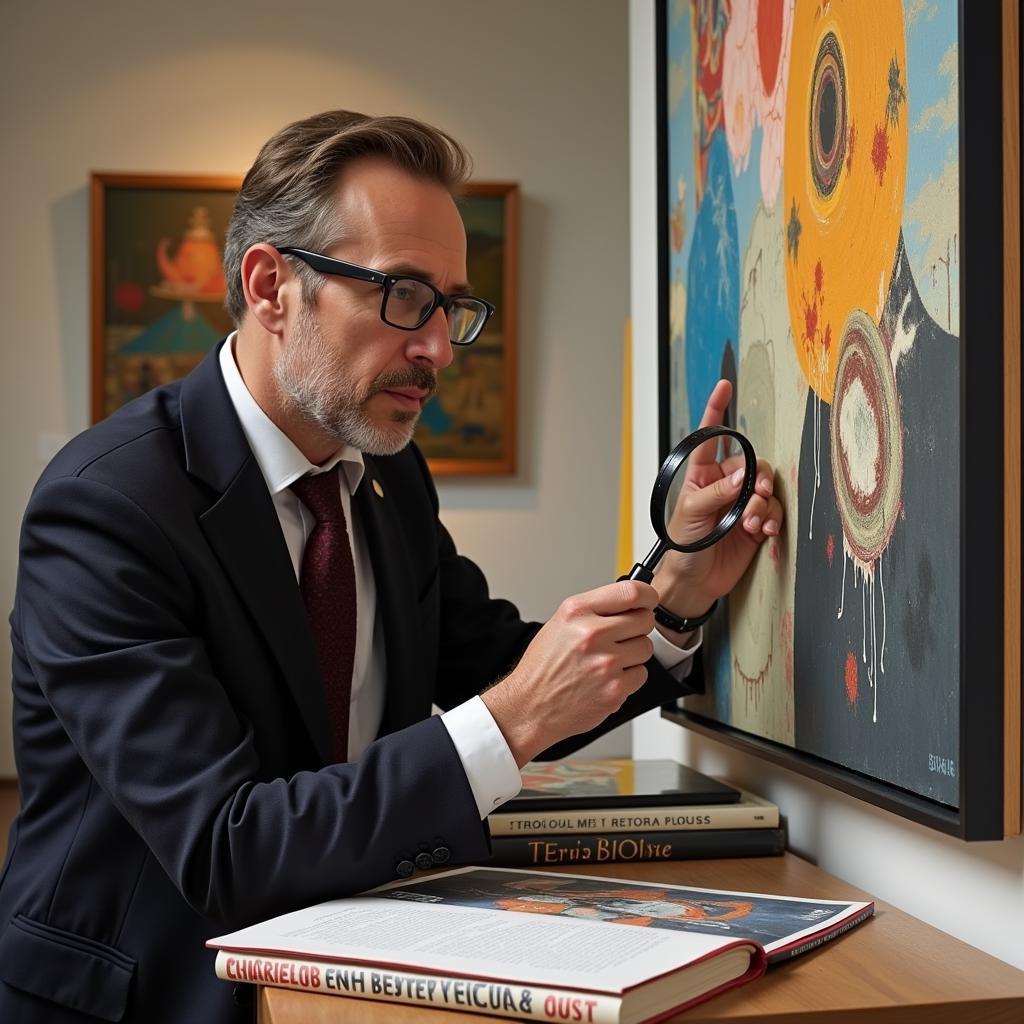 Art Critic Analyzing a Painting
Art Critic Analyzing a Painting
Beyond the Price Tag: Finding Value in Snob Art
Often, the high price tag associated with certain artworks contributes to their “snob” status. While price can be an indicator of market demand and perceived value, it doesn’t necessarily reflect the artwork’s intrinsic artistic merit. A piece can be expensive simply because it’s rare, or because it’s been hyped by influential collectors.
True art appreciation goes beyond the monetary value. It’s about connecting with the artwork on an emotional and intellectual level, regardless of its price tag. It’s about understanding the artist’s vision and appreciating the skill and creativity involved in its creation.
“The true value of art lies not in its price, but in its ability to evoke emotion and spark conversation,” says renowned art historian Dr. Amelia Vance of the Institute of Contemporary Arts. “Snobbery can obscure this value, creating a false sense of importance based on superficial factors.”
Snob Art and the Digital Age: Democratizing Access and Challenging Conventions
The digital age has significantly impacted the art world, challenging traditional notions of value and accessibility. Online platforms have democratized art, making it easier for artists to share their work and for viewers to discover new talent. This increased accessibility has also blurred the lines between “high art” and “low art,” challenging the very foundations of the snob art concept.
 Digital Art Creation on a Tablet
Digital Art Creation on a Tablet
“Digital art is breaking down the barriers that once defined ‘snob art’,” says digital artist and curator, Mr. Julian Thorne. “It’s empowering artists to connect directly with their audience and define their own value, independent of traditional gatekeepers.”
Conclusion: Appreciating Art on Your Own Terms
Snob art is a complex and evolving concept. While it can be associated with elitism and exclusivity, it can also represent a deep appreciation for artistic skill and historical context. Ultimately, the way we engage with art is a personal choice. We should not be intimidated by perceived notions of “snobbery,” but rather embrace our own curiosity and develop our own criteria for appreciating art. Snob art can be a starting point for exploration and conversation, but it shouldn’t dictate our aesthetic preferences.
FAQ
-
What is snob art?
Snob art refers to art perceived as exclusive and appreciated by a select few, often due to its high price, artist’s reputation, or perceived intellectual complexity. -
Is snob art always good art?
Not necessarily. The value of snob art can be inflated by hype and market forces, and doesn’t always reflect intrinsic artistic merit. -
How can I appreciate snob art without feeling intimidated?
Focus on your own emotional and intellectual response to the artwork, regardless of its perceived status or price. Research the artist and historical context to deepen your understanding. -
How is the digital age impacting snob art?
The digital age is democratizing art, making it more accessible and challenging traditional notions of value and exclusivity. -
How can I avoid being a “snob” about art?
Be open to different forms of art, avoid judging based on price or reputation, and focus on genuine appreciation and understanding. -
Is there a difference between appreciating complex art and being a snob?
Appreciating complex art involves genuine interest and a desire to understand its intricacies. Snobbery, on the other hand, often involves using art to elevate one’s social status or belittle others. -
How can I learn more about art history and theory?
Explore online resources, visit museums and galleries, and read books on art history and criticism.
Need support? Contact us 24/7: Phone: 02462573573, Email: [email protected] or visit Savico Megamall, 7-9 Đ. Nguyễn Văn Linh, Gia Thụy, Long Biên, Hà Nội 10000, Việt Nam.
Explore other articles on our website about art appreciation, digital art, and the art market to expand your knowledge. We also offer Online Art workshops that can help you develop your own artistic skills and deepen your understanding of different art forms.

